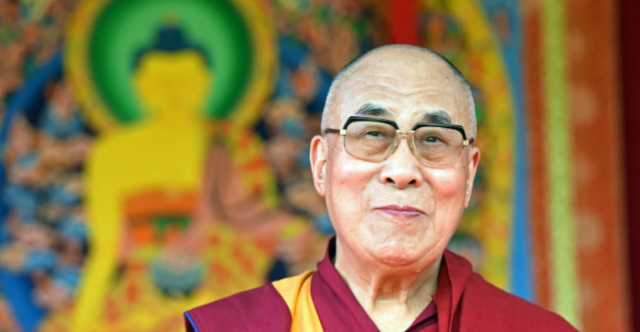DHARAMSHALA: Monday to Friday, from seven to 11 in the morning, the Dalai Lama holds an audience for his followers, friends and admirers at his residence in Dharamshala. There is a special word he may have for Indian journalists if they happen to be present, and last week four of us were privy to brief remarks relating to his hopes for Tibet’s autonomy from China, the growing influence of Buddhism among Chinese people and the impact of ancient Nalanda on Tibetan Buddhism.
Nothing he said was particularly new but important nonetheless, given an informal backchannel dialogue currently underway with China. What shape this dialogue could take would depend on how far the Chinese are willing to go on the issue of autonomy for Tibet.
As far as His Holiness is concerned, autonomy is cast in stone and there cannot be any way around that. But he’s also willing to talk despite past experience of Beijing’s obduracy and the iniquities being inflicted on his people.
At 88, the Dalai Lama’s thinking and enunciation is clear and as he has remarked on some previous occasion: “I am still determined to serve everyone for the next few decades”.
But he had also indicated in 2011 that when he turns 90, the issue of his reincarnation will be addressed, meaning he will consult high lamas, the Tibetan Buddhist public and “re-evaluate whether the institution of the Dalai Lama should continue or not”.
That was over a decade ago. Does it still stand? Presumably it does because he had also referred to the possibility of an “emanation”, who would take over his title and role while he was still alive. He has also said that he could not be reborn in a Tibet that remained under Chinese occupation. And given so many years spent among Buddhist communities outside China, it’s speculated the next Dalai Lama could come from, perhaps, Ladakh.
Or are all these red herrings, designed to confuse the Chinese who despite being officially atheist, have with unusual zeal applied themselves to the issue of reincarnation? They have reportedly set up teams of young lamas to identify the next Dalai Lama and the Tibetan regional government has constituted a high-level search committee for the purpose. Driving the point home, the Chinese Communist Party says it is the ultimate arbiter on the selection process of the Dalai Lama and the Panchen Lama.
The opinion in Dharamshala is clear: no Beijing-appointed Dalai Lama or Panchen Lama would have any credibility. But it could create divisions, sow dissensions among a community which has spread far beyond India. At the last count, there were 72,000 Tibetans in India, 10,000 in Nepal, 1000 in Bhutan and at least 50,000 in North America.
At a youth forum in Dharamshala two months ago, young Tibetans from 16 countries gathered to discuss how they could preserve their faith and culture, and what bigger role they could play given that they are the future. There were as many ideas as the countries the young Tibetans represented, and while support for the Dalai Lama’s “Middle Way” of eschewing all violence was widespread, much may depend on China’s treatment of ethnic Tibetans.
















